
Under the bright lights of the surgical skills laboratory at the USF Health Center for Advanced Medical Learning and Simulation (CAMLS), medical students and surgical residents practice together. Two learners to each life-sized operating room table, they focus on honing their suturing techniques using cryopreserved aortas.
In another surgical lab, course faculty evaluate vascular surgery fellows as they work through all the tasks needed to repair an abdominal aortic aneurysm, including threading a tiny catheter through a simulated femoral artery.
In the trauma operating room, another group of trainees gathers around a large monitor to observe as an instructor inserts a central line into an endovascular simulator.
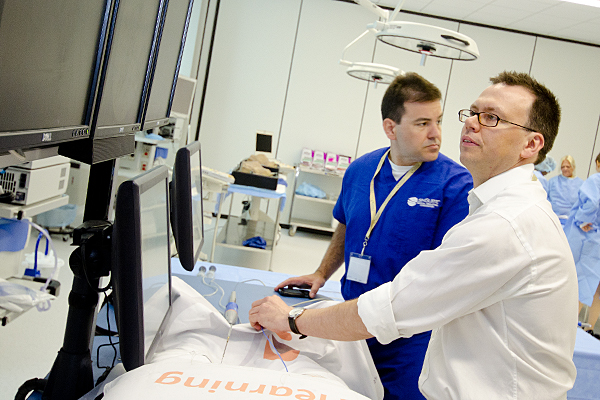
Dr. Ian Nordon, a vascular surgery fellow from England, watches the monitor as he uses a simulator to work through some of the critical steps required to repair an abdominal aortic aneurysm.
“This place is unique,” said Dr. Ian Nordon, a vascular surgery fellow who works at a university hospital in London, England. “I’ve never seen anything like it, certainly not in the United Kingdom system where most of our training is still very much on patients rather than on simulators.”
“Amazing,” said Dr. Erica Mitchell, associate professor of vascular surgery at Oregon Health and Science University. “A facility with all this space dedicated to learning and assessment of competency is impressive.”
Drs. Nordon and Mitchell were among the participants for one of the first programs offered at CAMLS, a 90,000-square-foot facility encompassing three floors of innovative simulation technology and experiences with education and research excellence under one roof. The Introduction to Academic Vascular Surgery course, which drew more than 45 medical students and vascular surgeons from across the United States as well as Canada, included simulation exercises and demonstrations on the first day.

Dr. Erica Mitchell observes as a medical student and general surgery resident practice suturing an aorta.
Such tools are needed both to measure the effectiveness of simulation training and optimize its use, Dr. Mitchell said.
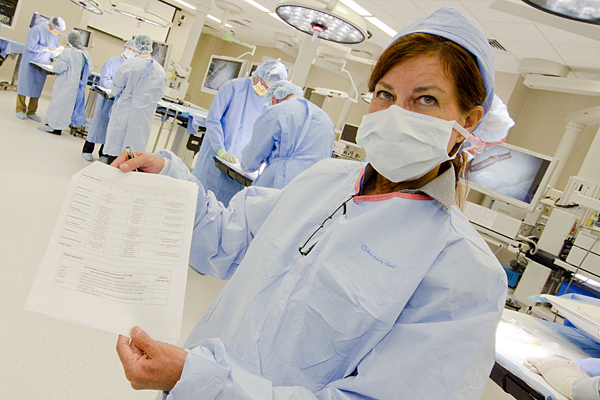
Dr. Mitchell holds the rating instrument developed by the Association of Program Directors in Vascular Surgery to assess the performance of basic vascular surgery skills across different levels of trainees.
“The beauty of simulation is that it allows a medical student or junior resident to practice and make mistakes on a machine where no one is hurt, instead of on a human being,” said Dr. Karl Illig, director of the USF Health Division of Vascular Surgery, who co-directed the course with USF’s Dr. Murray Shames.
“But, there’s still a gap between simulation as it exists today and what it could be,” Dr. Illig said. “CAMLS will be a leader in determining how to make simulation training work as well as possible in improving physician competency and patient safety.”
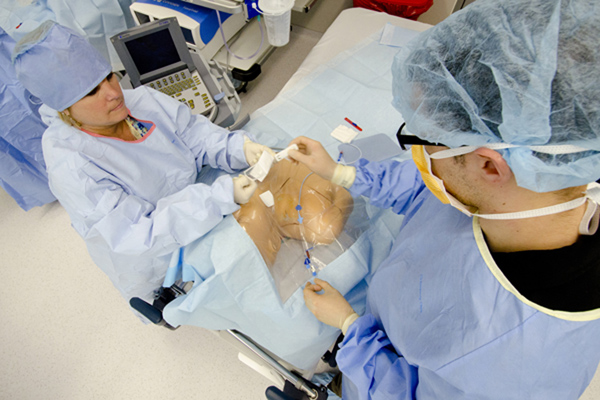
Medical students practice ultrasound-guided central venous catheter placement on a "Blue Phantom" simulator.
While more research is needed to determine whether learning augmented by simulation training is superior to more traditional educational methods, simulation appears to help shorten the learning curve for acquiring competency in basic skills, said Dr. Jason Lee, associate professor and director of the Vascular Surgery Residency and Fellowship Program at Stanford University.
“Simulation seems to accelerate the process of getting trainees from novice to an acceptable skill level” before they begin operating on patients, said Lee, who is studying whether a simulation-based endovascular curriculum improves residents’ performance and clinical outcomes.
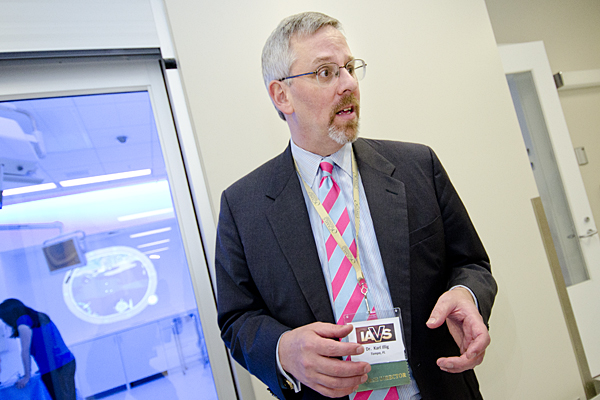
USF Health's Dr. Karl Illig (above) and Dr. Murray Shames (below) were course co-directors.
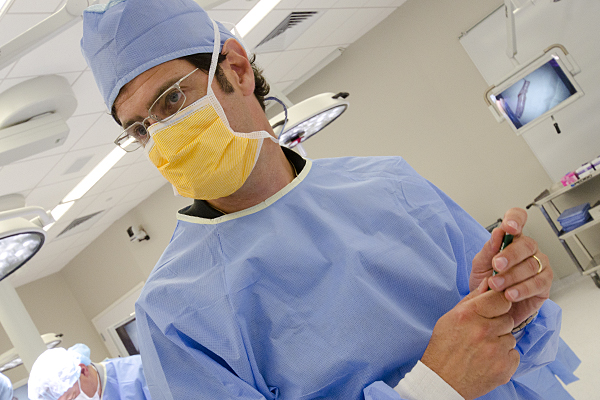
Dr. Pushpinder Sivia, a USF senior vascular surgery fellow who will graduate in July, has visited CAMLS several times since it opened. In his experience, Dr. Sivia said, simulation is valuable because it allows surgeons to practice complex or new procedures repeatedly. “You can do dry runs in a (risk-free) place like this before tackling a complicated case in the operating room,” he said.
Whether someone is an inexperienced medical student or a physician with years of expertise who needs to update his or her skills, simulation “is the future,” APDVS’s Dr. Mitchell said. “With limits on time for residency training, the increasing emphasis on patient safety and unprecedented public demand for better health outcomes, simulation is becoming increasingly integrated into medical school training programs.”

Course participants gather for a demonstration of central line insertion using a high-fidelity simulator at CAMLS.
More than 30,000 health professionals from around the world are expected to visit USF Health CAMLS each year for education and training activities, from courses on advanced surgical techniques (using state-of-the-art simulators and robots) and interprofessonal team training, to research and innovation for the next generation of medical devices and simulation technology.

Medical students, residents and faculty gown up before entering the CAMLS Surgical Skills Laboratory for simulation exercises.
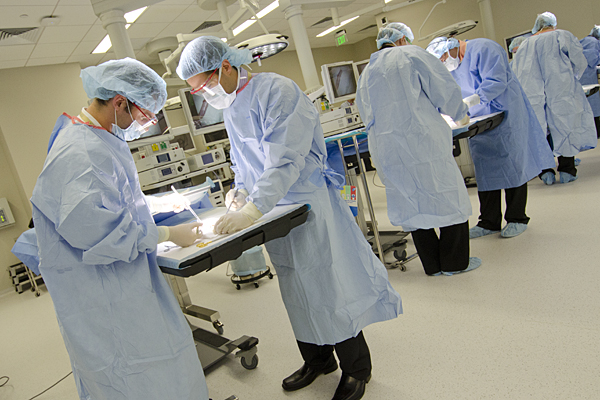
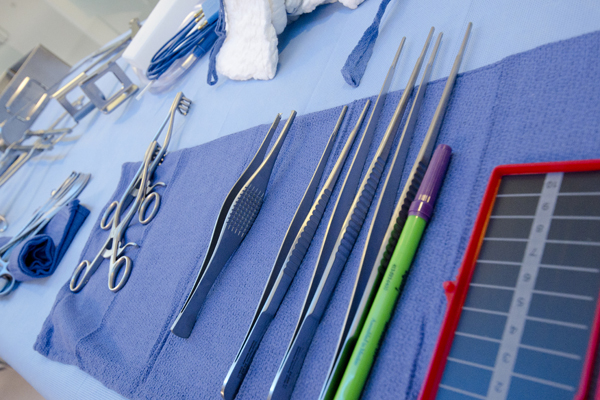
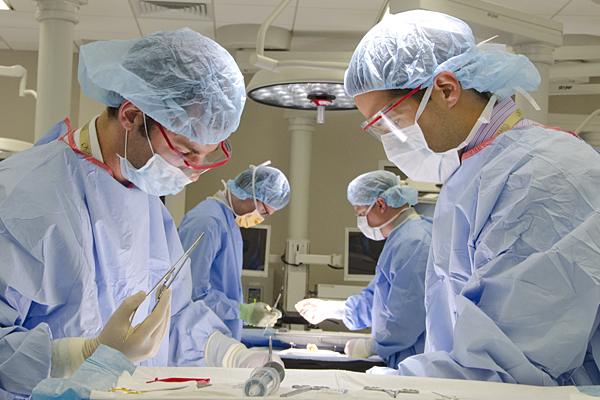
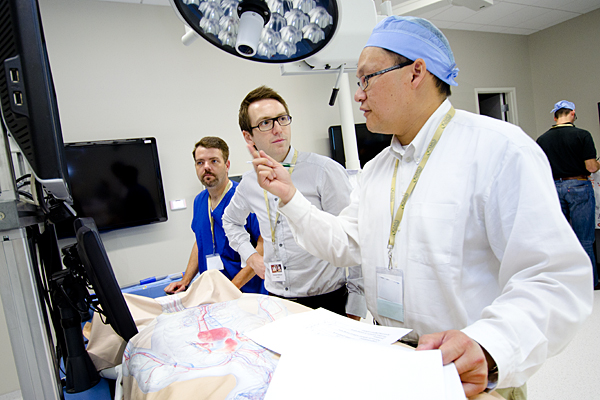
Photos by Eric Younghans, USF Health Communications
